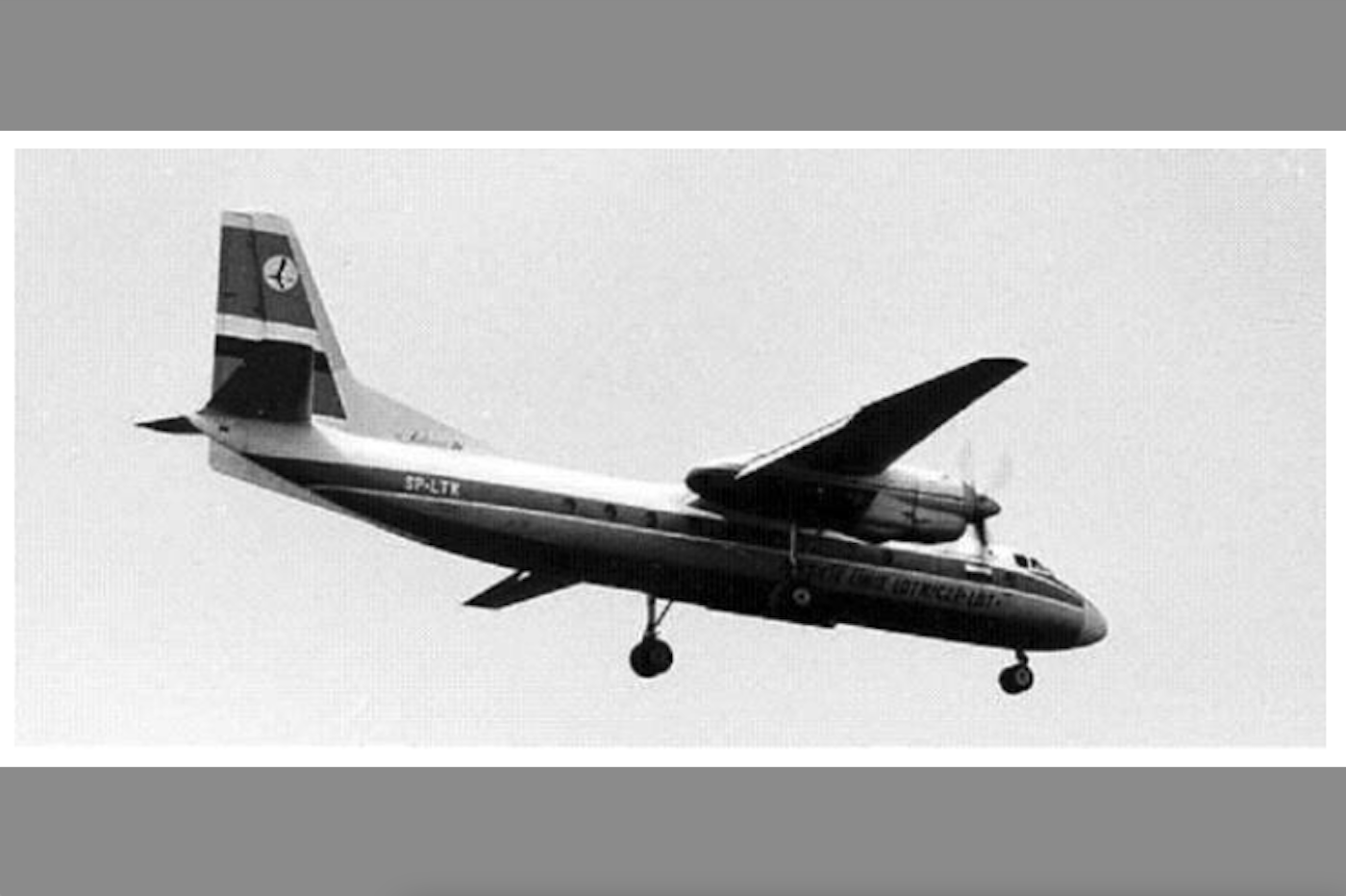Kraków 2010-01-04
The tragedy of An-24 In nb 012 in Goleniów on February 23, 1973.

The biggest disaster at Goleniów Airport was the crash of the Antonov An-24 government transport plane with important people on board.
On December 24, 1969, the An-24 W No. 97305702 nb 012 aircraft was accepted into the status of the An-24 W No. 97305702 nb 012 aircraft to the 36th Special Regiment of Transport Aviation based in Okęcie. The aircraft was new, made to a slightly higher standard and was intended for the transport of important people, members of party authorities and state-owned.
In 1973, the aircraft had more than three years of service behind it. On February 23, 1973, the plane made a flight from Warsaw (Okęcie) to Goleniów. On board was a military delegation headed by the Minister of the Interior in the government of Piotr Jaroszewicz, Wiesław Ociepka, along with the accompanying officers of the Polish Ministry of Internal Affairs and six guests from Czechoslovakia: including the Czechoslovak Minister of Internal Affairs Radko Kaska and the head of the state administration department of the Communist Central Committee Of the Czechoslovak Party by Michał Kudzej. Guests from Prague wanted to visit, among others, the seaport and their consulate in Szczecin.
The flight took place in the evening, and practically at night. The weather was fine, but remember it was winter. The plane was guided to the very end by airport navigation devices. All An-24 components worked properly. No disturbing communications were recorded in conversations with the tower.
At around 10 p.m., the plane descended and, as planned, began to approach the airport in Goleniów. Visibility was somewhat limited by clouds, but no major navigational problems were noted. RWY was well lit. Exactly at 22:52 the radio contact with the pilot suddenly broke off. The governmental An-24 never reached the Goleniów Airport. The worst was expected. The team sent into the field had no doubts that no one could survive. The plane hit the ground with such force that its remains were within a radius of several hundred meters. Out of 18 people, no one managed to save themselves.
The mass media hardly reported the accident. It was ensured that the information about the crash and its causes did not get public - the place of the accident was immediately surrounded by the militia, the army and the SB, and censorship prohibited the newspapers from publishing any information other than official announcements without photos and details.
In the communiqué published a month after the tragedy of the special commission, which was composed mainly of experts from the Air Force Institute of Technology, it was written that "the cause of the crash was a sudden loss of flight altitude (the so-called ". The turbulence was supposed to occur as a result of the clash between the cold and warm fronts at a low altitude. At the last moment, the pilot tried unsuccessfully to lift the falling plane up. Violent turbulence combined with icing of the wings was considered to be the cause of the accident.
The full list of the victims of the catastrophe according to the official statement published in the newspaper "Trybuna Ludu" on March 2, 1973:
Ministry of Internal Affairs of the People's Republic of Poland: Wiesław Ociepka - Minister of the Interior, Col. Czesław Karski, Col. Wiesław Zajda, Major Mieczysław Szumowski, Major Włodzimierz Strzelecki, Second Lieutenant Włodzimierz Andrzej Wulkiewicz, platoon. Mikołaj Stefan Tomala; CSRS delegation: Radko Kaska - Minister of the Interior, Michał Kudzej - Head of the State Administration Department of the Central Committee of the Communist Party of the Czech Republic, Col. Jarosław Klima, Lt. Col. Ladislav Huzvik, Major Dr. Olga Merunova, Oldrich Dufek;
the crew of the 36th SPLT: Maj. pil. Edward Jedynak, 43, Capt. pil. Kazimierz Marczak, 34, Capt. navigate Daniel Sterna, 39, Capt. Janusz Główka, 48, Sgt. staff. Tadeusz Błażejczyk, 44 years old.
Total 18 people. Honor their memory!
Written by Karol Placha Hetman
